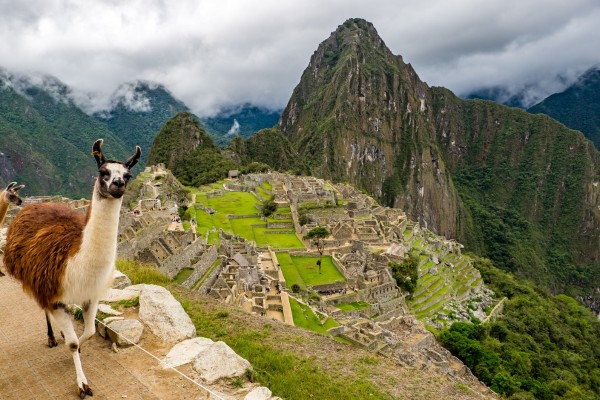Travelling isn’t just about ticking countries off a list — it’s about walking in the footsteps of those who came before us. Whether it’s the ruins of ancient empires, grand cathedrals built over centuries, or silent battlefields that shaped history, the world is brimming with destinations that transport us through time. Here’s a globe-spanning guide to some of the top historical sites every culture-curious traveller should visit.
1. Machu Picchu, Peru – The Lost City of the Incas

Perched high in the Andes Mountains, Machu Picchu remains one of the most mysterious and awe-inspiring archaeological sites in the world. Built in the 15th century and later abandoned, this Incan citadel wasn’t discovered by the modern world until 1911.
Walking among its terraces, temples, and steep stairways surrounded by mist-covered peaks feels like stepping into another world. It’s not just the view that’s breathtaking — it’s the realisation of how advanced Incan engineering and culture were, even at such dizzying altitudes.
Travel tip: Hike the Inca Trail for a truly immersive and rewarding journey to the site.
2. Petra, Jordan – The Rose City
Carved into pink sandstone cliffs, Petra was once a thriving trading hub and the capital of the Nabataean Kingdom as early as 300 BC. Its most famous structure, Al-Khazneh (The Treasury), greets visitors after a dramatic walk through the narrow gorge known as the Siq.
What makes Petra special is not just its architecture but the way nature and craftsmanship collide. As the sun moves, the entire city changes colour — an unforgettable spectacle.
Fun fact: Petra was largely unknown to the Western world until the early 1800s when a Swiss explorer rediscovered it.
3. Angkor Wat, Cambodia – A Spiritual Giant
Angkor Wat isn’t just a temple — it’s the largest religious monument in the world. Built in the 12th century, this vast complex originally honoured the Hindu god Vishnu before becoming a Buddhist sanctuary.
Wandering through the temple’s intricate corridors, colossal towers, and stone-carved galleries is both humbling and haunting. Monks in saffron robes often add a flash of colour to the otherwise grey stone.
Best time to visit: At sunrise. Watching the first light reflect in the moat is a spiritual experience in itself.
4. The Colosseum, Italy – Echoes of Ancient Rome
You can’t talk about historical sites without mentioning Rome’s Colosseum. Once the grand stage for gladiator battles, it stands today as a symbol of Roman ingenuity, entertainment, and social hierarchy.
Built in AD 80 and capable of holding over 50,000 spectators, it’s a testament to how sophisticated Roman engineering was. The underground chambers and trapdoors are still visible today — a real-life look into ancient showbiz.
Nearby: Combine your visit with the Roman Forum and Palatine Hill for a complete picture of imperial Rome.
5. The Great Wall of China – A Marvel Across Mountains
Spanning over 13,000 miles, The Great Wall of China isn’t a single wall but a series of fortifications built to defend against invasions. Constructed over centuries by various dynasties, it remains one of the world’s most iconic landmarks.
Its sheer scale, especially as it snakes along mountain ridges and valleys, is mind-blowing. Sections near Beijing, such as Badaling and Mutianyu, are popular for their accessibility and restored beauty.
Tip: For a less touristy experience, visit the Jinshanling or Jiankou sections.
6. Stonehenge, England – Ancient Enigma
A circle of massive standing stones on the Salisbury Plain, Stonehenge is one of the UK’s most famous and mysterious prehistoric monuments. Built over 4,500 years ago, its exact purpose is still debated — was it a burial site, a calendar, or a place of worship?
What’s undisputed is its cultural significance. Visiting during the solstices offers a glimpse into ancient ritual and spirituality.
Don’t miss: The on-site exhibition centre which provides archaeological insight and life-sized reconstructions.
7. The Pyramids of Giza, Egypt – Wonder of the Ancient World
The only remaining of the Seven Wonders of the Ancient World, the Pyramids of Giza are an enduring symbol of ancient Egyptian brilliance. The sheer scale of the Great Pyramid, built as a tomb for Pharaoh Khufu, is staggering — especially considering it was constructed around 2600 BC.
Alongside the pyramids sits the iconic Sphinx, silently guarding the plateau. It’s hard not to feel a sense of wonder when you consider the generations of workers and craftsmen who made this feat possible.
Pro tip: Visit early in the morning or at sunset to avoid the heat and enjoy softer light for photos.
8. Alhambra, Spain – Moorish Majesty
Overlooking the city of Granada, the Alhambra is a palace-fortress complex that showcases Islamic architecture at its finest. Built during the Nasrid Dynasty in the 13th century, its intricately detailed walls, reflecting pools, and lush gardens tell a story of artistic devotion.
Each room seems more beautiful than the last, with calligraphy, tile mosaics, and latticed windows playing with light and shadow. The Generalife Gardens, in particular, offer a peaceful contrast to the palace interiors.
Best time to go: Spring, when the gardens are in full bloom.
9. Chichen Itza, Mexico – Echoes of the Maya
Once a powerful city of the Maya civilisation, Chichen Itza is now one of Mexico’s most visited historical sites. The towering El Castillo (Temple of Kukulcán) is not only architecturally brilliant but also astronomically aligned — during the equinox, shadows create the illusion of a serpent descending the steps.
The site also features ancient ball courts, temples, and a vast cenote believed to be used for sacrifices. It’s a spine-tingling yet fascinating peek into Mesoamerican life.
10. Himeji Castle, Japan – Elegance in Defence
Unlike most ancient structures built purely for war, Himeji Castle in Japan is a masterpiece of both beauty and military design. Known as the White Heron Castle due to its white plastered walls and elegant form, it has survived earthquakes, fires, and even war.
Its maze-like paths, designed to confuse invaders, contrast with the serenity of the surrounding cherry blossoms in spring.
Bonus: It’s one of only a few castles in Japan that remains entirely intact and original.
Final Thoughts: A Journey Through Time
From South America’s misty mountains to Asia’s majestic palaces and Europe’s storied ruins, the world’s historical sites connect us to humanity’s rich tapestry. Visiting these places isn’t just educational — it’s emotional. It’s about imagining the hands that carved, built, ruled, and lived long before our time.
Whether you’re a history buff, an architectural enthusiast, or just a curious traveller, these sites are more than just points on a map — they’re experiences that linger in memory, echoing with the voices of civilisations past.
So next time you’re planning a trip, don’t just follow the trend — follow the footsteps of time.
Explore TBTD Today!
Grab the Best Flight Deals Now
Grab the Best Hotel Deals Now
Grab the Best Car Rental Deals Now
Grab the Best Bus Ticket Deals Now
Grab the Best Airport Transfer Deals Now
Grab the Best Adventure Tour Deals Now
Grab the Best Train Ticket Deals Now
Grab the Best Cruise Ticket Deals Now
Explore AP Today for the Best Discounts & Promotions across Asia!
Explore ES Today for the Best Discounts & Promotions across Europe!











